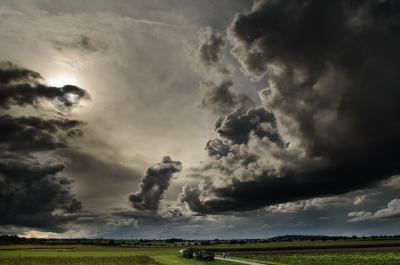Building a Theoretical Model for Thunderstorms over the Central United States
Research suggests that the inadequate treatment of mesoscale convective systems (MCSs) produces the longstanding summer warm and dry biases over the central United States in climate model simulations. There is also lack of understanding of the key processes associated with MCS initiation and how convection aggregates to produce heavy precipitation covering large areas. To fill these gaps, scientists developed a single-column parcel model that realistically simulates convective initiation, its diurnal cycle, and its response to global warming. Extending the singe-column model to multi-column model, they found that cold pools may play an important role for convection to develop into large thunderstorms.
MCSs that initiate near the foothills of the Rocky Mountains often propagate eastward, producing heavy precipitation that contributes to flooding in the central and eastern United States. As climate models have very limited ability to simulate MCSs, their projections of future changes in summertime precipitation and flooding involve large uncertainties. Simple theoretical models may provide a bridge between theories and climate models, improving fundamental understanding of MCSs and constraining climate model projections of their future changes. The success of the newly implemented models for simulating MCS initiation and mesoscale cluster development lays the foundation for their future use in MCS research.
This study aims to develop a simple model of MCS initiation; use it to understand the salient mechanisms necessary for reproducing key MCS features, such as their upscale growth; and explore how MCSs may be influenced by global warming. Researchers achieved these goals through research in the following five aspects: (1) develop a simple single-column model to capture the basic features of summer-time convective initiation over the central United States; (2) investigate the collective effects of boundary layer moistening and dynamical lifting on convective initiation; (3) study the diurnal cycle of convective initiation and identify the differences between cases with/without MCS initiation; (4) explore the impact of global warming on convective initiation and, theoretically, predict the convection population under climate change; and (5) develop a multi-column model with spatial dependence to reproduce the upscale growth and identify key mechanisms for determining the final states of MCSs. Complementing cloud-resolving models, the simple model developed in this study is a useful tool for advancing scientific understanding of MCSs and their response to global warming.

